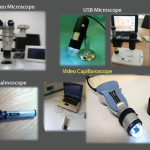Skin ulcers are a common vascular complication of progressive SSc and can occur in association with the late NVC pattern; this pattern is characterized by the presence of avascular areas, indicative or consistent with tissue necrosis (see Figure 13). An association between trophic lesions of the skin and capillary loss, as assessed by semiquantitative scoring, has also been reported.16 In fact, loss of capillaries may be important in tissue hypoxia and, in patients with recent-onset Raynaud’s phenomenon, the appearance of rapidly progressive capillary loss by capillaroscopy may represent the first evidence of severe SSc with destruction of microvessels.17
Implications of Progressive Capillary Loss for Complications in SSc
To evaluate the role of the capillaroscopic analysis for predicting the development of skin ulcers of SSc patients, several indices have been proposed, particularly for progressive capillary loss (see Figure 14). A recent study presented a risk index that might predict new digital ulcers by NVC analysis in patients with SSc; however, this index may be too complex for routine use and has not yet been validated.18 Subsequently, another study has found that capillary dimensions and loss of capillaries are strongly associated with digital ulceration; a significant correlation with increased serum ET-1 level also was confirmed in patients with SSc.19 Recently, using a reliable and simple NVC parameter that can be scored (semi-)quantitatively (mean score of capillary loss), a simple prognostic index for use in SSc clinics was obtained in consecutive patients for prediction of digital trophic lesions.20
Regarding the predictive value of capillaroscopy in visceral involvement, a seminal study showed that reduced nailfold capillary density in SSc patients with established pulmonary arterial hypertension (PAH) might have pathogenic significance and allow detection of the subset of patients with this severe disease manifestation (almost 20%) at an early stage in its progression.21 A more recent study showed that the association between ground-glass lung opacities and higher capillaroscopic avascular scores (loss of capillaries) is particularly strong in SSc patients with a disease duration of less than five years.22
The significance of capillary nailfold changes (i.e., loss of capillaries) in SSc patients with and without PAH was addressed in a larger study that included not only patients with SSc but also patients with idiopathic PAH.23 In this study, the capillary number was significantly lower in patients with SSc and PAH compared with patients with SSc but without PAH; loop dimensions, however, were similar. This finding suggests that loop dimensions may be neither a reliable nor informative parameter for prognostic purposes. On the other hand, the data in this study indicated the number of capillaries in healthy control subjects is significantly higher than those in patients with SSc without PAH, SSc patients with PAH, and patients with idiopathic PAH. Interestingly, capillary density was negatively and significantly correlated with mean pulmonary arterial pressure at rest in patients with SSc and PAH and in patients with idiopathic PAH.23 Thus, a reduction in nailfold capillary density (late SSc pattern) appears to correlate with the severity of PAH in both SSc and idiopathic PAH.
Effects of Therapy on Microvascular Damage and Videocapillaroscopy Findings
Current treatments for SSc have very limited efficacy. Nevertheless, the management of Raynaud’s phenomenon may slow the progression, including the remodelling of digital microvascular abnormalities that can impair perfusion and cause tissue hypoxia due to the loss of capillaries.

